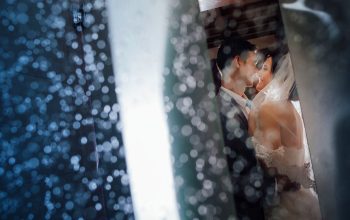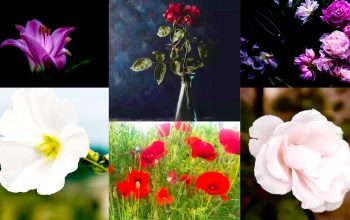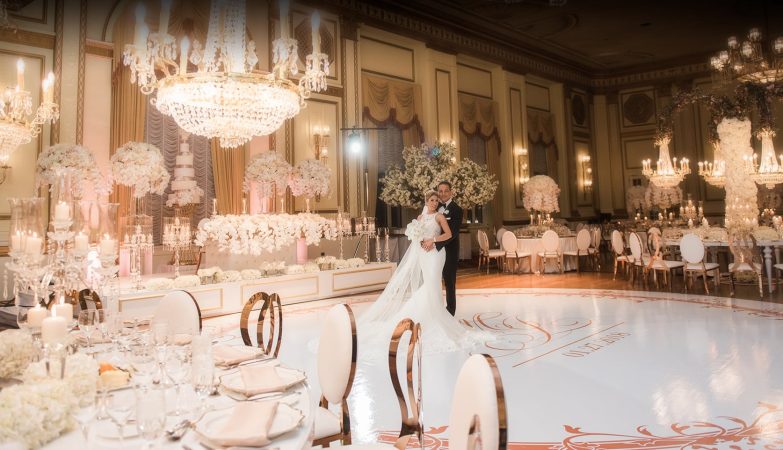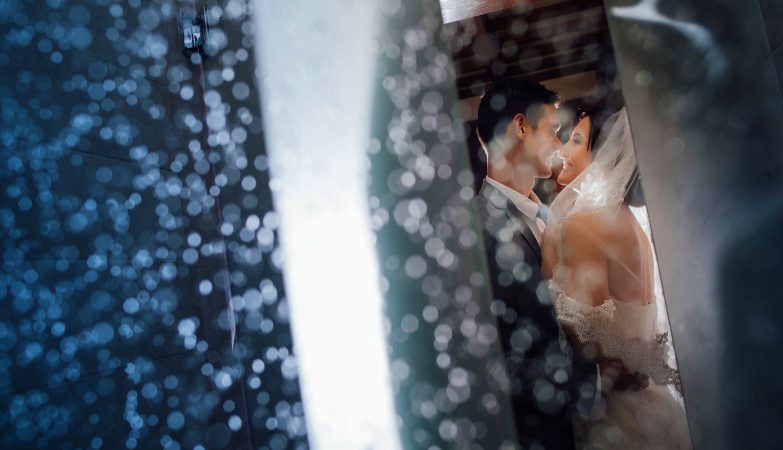
Do you want to know how to do high-quality focus stacking? Are you interested in creating amazing focus-stacked images? You’ve come to the right place. Because in this article, I’m going to tell you everything you need to know about focus stacking. I’ll explain what it is, how to do it, and software recommendations for pulling off incredible focus stacks.
Now, focus stacking is an advanced photographic technique, one that intimidates a lot of beginners. But it’s not actually that hard – you just have to know a few basic tricks, and software will take care of the rest. In fact, plenty of landscape and macro photographers use focus stacking frequently.
Why? Because landscape photographers and macro photographers deal often with scenes that have a lot of depth. And while an aperture of f/16 or even f/22 might seem like it can easily give you the necessary depth of field, that’s not always the case.
Plus, at narrow apertures you end up with softness due to diffraction – which a bit of focus stacking can prevent. Now let’s take a closer look at the nature of focus stacking:
What Is Focus Stacking?
Focus stacking is a way of dealing with limited depth of field.
Focus stacking is an advance photography technique of taking several images of the same scene but focused at different points. Then blending the images together – that is, stack them – in order to create a scene with the extended depth of field that’s sharp throughout.
That is, focus stacking will ensure that your image is sharp throughout – even when a single shot results in an image with insufficient depth of field. Note that focus stacking is unnecessary in most situations.
Portrait photographers, for instance, can often get the depth of field they need with a fairly wide aperture.
Street photographers can get the required depth of field for their subjects with an aperture between f/2.8 and f/8.
And wildlife photographers generally work in the f/4 to f/8 aperture range in order to get the necessary depth of field when photographing wildlife.
Focus Stacking In Landscape Photography
Now, a landscape photographer generally requires that the entire scene be sharp, from a rock in the foreground to a mountain in the background. Sometimes, it’s possible to pull this off with a single image by using an aperture of around f/11-f/16.
But sometimes you won’t have enough depth of field to get the entire scene sharp, even if you carefully set your focus to the hyperfocal distance. That’s when focus stacking becomes necessary. Because if you want to capture a shot that includes a near foreground element (such as a rock) and a distant background element (such as a mountain), then a narrow aperture might not cut it.
Focus Stacking In Macro Photography
Macro photography, product photography, and still life photography offer similar stories. This is because high magnifications limit your depth of field – so that a highly magnified image taken at f/16 will only have a sliver in focus, despite the narrow aperture.
Hence the reason for focus stacking, in order to keep the entire image as sharp as possible. A macro photographer may want to capture a perfectly sharp photo of a wasp’s head. But this is impossible with a single shot, even one at f/22, assuming you’re shooting at extreme magnifications.
Make sense? Which brings me to the next section:
How Focus Stacking Works: A Quick Guide
Technically, the process of focus stacking consists of two separate techniques: Focus Bracketing and Image Merging.
Focus Bracketing
First, you must perform focus bracketing. This is the process of taking several shots that are focused at different distances. In order to do high-quality focus bracketing, you’ll want to make sure you’re focusing incrementally throughout the scene, so that you cover every area with an image. So if you’re photographing the scenic mountain/rock scene I mentioned above, you’ll want to capture a shot that focuses on the foreground, a shot that focuses on the midground, and a shot that focuses on the background.
Note that the number of shots in your focus bracketing series will depend on the depth of the scene. A landscape shot with a near foreground element will often take only two or three shots to stack. But a macro shot with the head of an insect might take 10 shots at reasonable magnifications, and 20, 30, or even 100 shots at ultra-high magnifications. Once you’ve carried out the necessary focus bracketing, it’s time to take a look at the second technique:
Image Merging
During this part of the process, you’re going to be loading the series of bracketing shots to your computer and combining them via a software program. While merging photos can be fairly automated, there are manual ways of stacking images – and there are some situations where this is ideal (discussed below).
While there are a number of focus-stacking programs out there, some of the best focus stacking can be done with full-featured photo editors such as Adobe Photoshop CC or Affinity Photo.
When To Use Focus Stacking
As I’ve explained above, you’re going to need to think about focus stacking whenever you have insufficient depth of field to handle a scene with a single shot.
But what exactly does this mean? Depth of field refers to the amount of your shot that is sharp. And the depth of field is influenced by the aperture – but it also depends on the distance between your camera and the point of focus, as well as your lens’s focal length.
So as your subject becomes closer to the camera, your depth of field becomes more limited (assuming you focus on the subject, that is). This is why it can be hard to decide whether to focus stack:
Because your depth of field changes as your camera’s distance to the point of focus changes.
This is where hyperfocal distance becomes important. Hyperfocal distance refers to the point of focus that will maximize the amount of scene that is sharp. Focusing at the hyperfocal distance is a way of using your available depth of field as much as possible – as if you’re spreading a net to cover the largest possible area. If you focus in front of the hyperfocal distance, you’ll end up with a blurry background. And if you focus behind the hyperfocal distance, you’ll end up with a blurry foreground.
The reason this matters is because you should always focus at the hyperfocal distance when doing a single (unstacked) exposure of a scene. If you focus at the hyperfocal distance and you fail to get the entire scene sharp, it’s a sign that focus stacking is necessary. Of course, in order to decide whether focus stacking is necessary you’ll need to first determine the hyperfocal distance.
So one way to assess whether focus stacking is definitely necessary is to shoot the scene, taking care to focus at the hyperfocal distance. Then zoom in on your camera LCD to check the sharpness both in the foreground and the background. If the nearest foreground element and the most distant background element are sharp, then there’s no need to focus stack. But if either area is blurry, then focus stacking is required!
Manual Focus Stacking
If you’re only stacking a few images (two or three), and if the scene is a fairly deep landscape, then you can use manual focus stacking to create the final shot.
First, capture two or three images, focusing throughout the scene (the first shot can focus on the nearest element, the last shot can focus on the most distant element). Then open your images as layers in Photoshop, make sure they’re perfectly aligned – and then blend them together using basic masking, so that only the sharp parts of each image are represented in the final photo.
Unfortunately, it’s a lot more difficult to stack macro images manually. Same with images with 5 or more shots. So for these, I recommend using automated focus stacking:
Automated Focus Stacking
If you’re working with more than two or three shots, then you’re definitely going to want to automate your focus stacking. This includes the focus bracketing portion of the technique, as well as the merging process.
For a long time, the only way to do complex focus bracketing was by way of expensive equipment. But these days, even mid-range cameras have focus stacking functionality built in. For instance, the Nikon D850 has focus bracketing, as does the Fujifilm X-T2, the Fujifilm X-T3, and the Canon EOS RP.
These automated methods of bracketing will focus the lens at various points throughout the scene (so you don’t have to struggle with focusing on your own).
In-Camera Focus Bracketing And Focus Stacking
While a number of cameras have focus bracketing capabilities built in, some manufacturers push boundaries even further. For instance, some Lumix and Olympus models have not only focus bracketing functionality, but also focus merging abilities.
That way, you can focus bracket and focus stack while in the field, and you don’t have to do any work with software later on. Not all cameras have this capability, however, which is when you’ll need to turn to focus stacking software.
Focus Stacking Software
When it comes to choosing focus stacking software, you have two options: Full-featured photo editors that include focus stacking capabilities, and specialized focus stacking software.
First, let’s take a look at the more general focus stacking options:
Focus Stacking In Adobe Photoshop CC
Photoshop CC is one of the easiest ways to focus stack, because the stacking capabilities are built into the Photoshop menu. You also have the ability to do manual stacking (as described above), or to make other edits to your photos before or after focus stacking.
That said, if you haven’t used Photoshop previously, there can be a bit of a learning curve – plus, you’ll have to purchase an Adobe CC subscription, which is expensive.
Focus Stacking In Affinity Photo
Affinity Photo is an excellent alternative to Photoshop, without the problems that come with a subscription model. The focus stacking software included in Affinity Photo is extremely capable; it’s as effective as Photoshop.
Plus, Affinity Photo costs far less than Photoshop in the long run, with an up-front fee of just $49.
Focus Stacking In Lightroom
Unfortunately for dedicated users, focus stacking isn’t a functionality that’s provided by Lightroom. You’ll need to export your images to Photoshop, or to another program entirely.
Do You Need A Dedicated Focus Stacking Program?
For most landscape photographers, a program such as Photoshop CC or Affinity Photo is more than enough. You can easily stack several images, either manually or through layer-based editing. But some photographers – macro photographers, in particular – like to use dedicated focus stacking programs. These tend to be more capable, especially with large numbers of images, and is a great way to go as you focus stack more frequently.
The two most popular options out there are Zerene Stacker and Helicon Focus. But Zerene is fairly expensive if you want all the features ($189 USD), which is why I recommend Helicon Focus to beginners who want a dedicated option; it costs $30 USD for a one-year license, or $115 USD for a lifetime license.
Conclusion
Focus stacking is a somewhat technical method in photography – but it can greatly expand your landscape and macro photography arsenal. So if you’ve ever wanted to try focus stacking, now’s your chance!
originally posted on phototraces.com by Jaymes Dempsey
About Author: Jaymes Dempsey is a photographer from Ann Arbor, Michigan. He’s obsessed with nature, and loves teaching people new photography tips and tricks. To see more of Jaymes’s work, check out his portfolio website (https://www.jaymesdempsey.com/) or his photography tutorial blog (https://www.jaymesdempsey.com/blog/).






